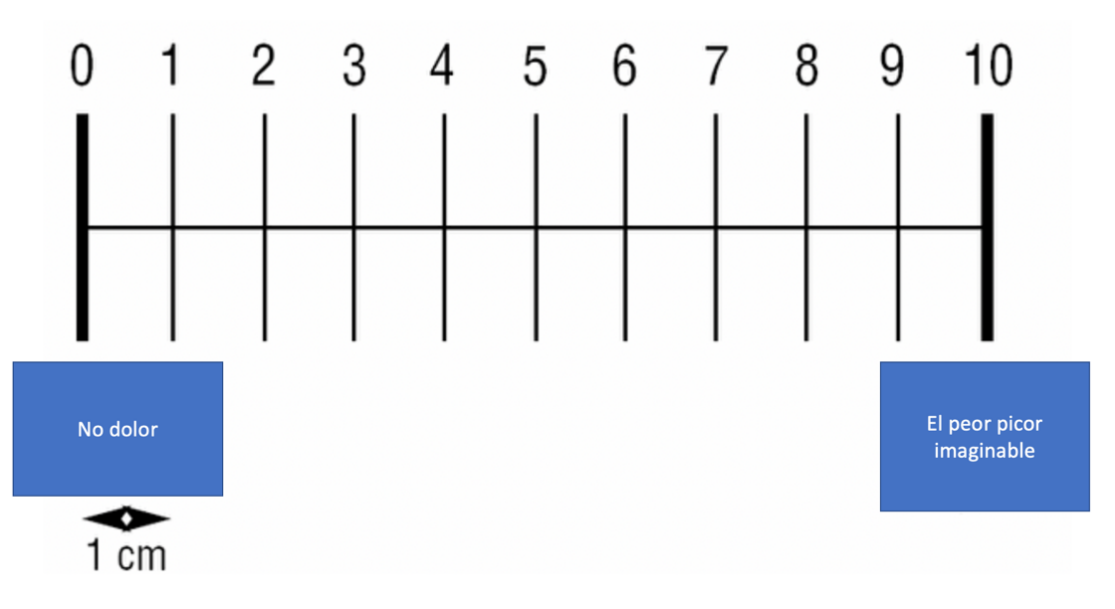Epidermolysis bullosa
2. Itch assessment
Since itchiness is a subjective symptom, it is important being able to evaluate and measure it in some way in order to observe in which moments it appears more frequently and the treatment’s effectivity or the presence of triggering factors. It is recommended to evaluate the characteristics of the itch: localized or general, when does the itchiness start, emotional stress, hygiene and skin-care products used, type of administered medications, etc.
The most recommended measures to evaluate the itchiness are to ask questions to the patient with EB about its intensity, the places it appears, which factors make it increase or decrease, how does it make them feel, etc. There are also objective scales to measure the itchiness. Most of these scales are designed by health professionals (itch man scale, 5D itch scale). However, the visual analogical scale (VAS) ofitchiness (also described in the chapter referred to pain) could be a good alternative applicable from 8 years old onwards in collaborating people (Figure 4).
The most recommended measures to evaluate the itchiness are to ask questions to the patient with EB about its intensity, the places it appears, which factors make it increase or decrease, how does it make them feel, etc. There are also objective scales to measure the itchiness. Most of these scales are designed by health professionals (itch man scale, 5D itch scale). However, the visual analogical scale (VAS) ofitchiness (also described in the chapter referred to pain) could be a good alternative applicable from 8 years old onwards in collaborating people (Figure 4).

Special considerations of itchiness in pediatrics
keep them in mind when trying to understand the itchiness. It is important not to underestimate the itchiness in new-borns, infants and/or older children, as it is also a damaging and debilitating symptom for them.
In paediatrics, the itchiness related to systemic diseases or adverse effects of medication is not as common as in adults. Infants with EB require higher attention to the environmental factors, more so than in older children, as their ability to intervene is more reduced.
Some characteristics of the infant skin which modulates how the itch affects the children are:
- High body surface area in relation to weight, with thinner superficial layers of skin. This conditions a greaterabsorption of medications and topical emollients, as well as a greater penetration of allergens and/or infectious agents. Therefore, emollients (especially in early childhood) should never contain perfumes, dyes, additives or preservatives (due to the increased risk of allergies and irritation).
- Less barrier function. Natural moisturizing factors and fluid concentrations in the cell membranes of infant skin are lower than in adults.
The evaluation of itchiness in children is more difficult as it is usually centred in what the parents tell.